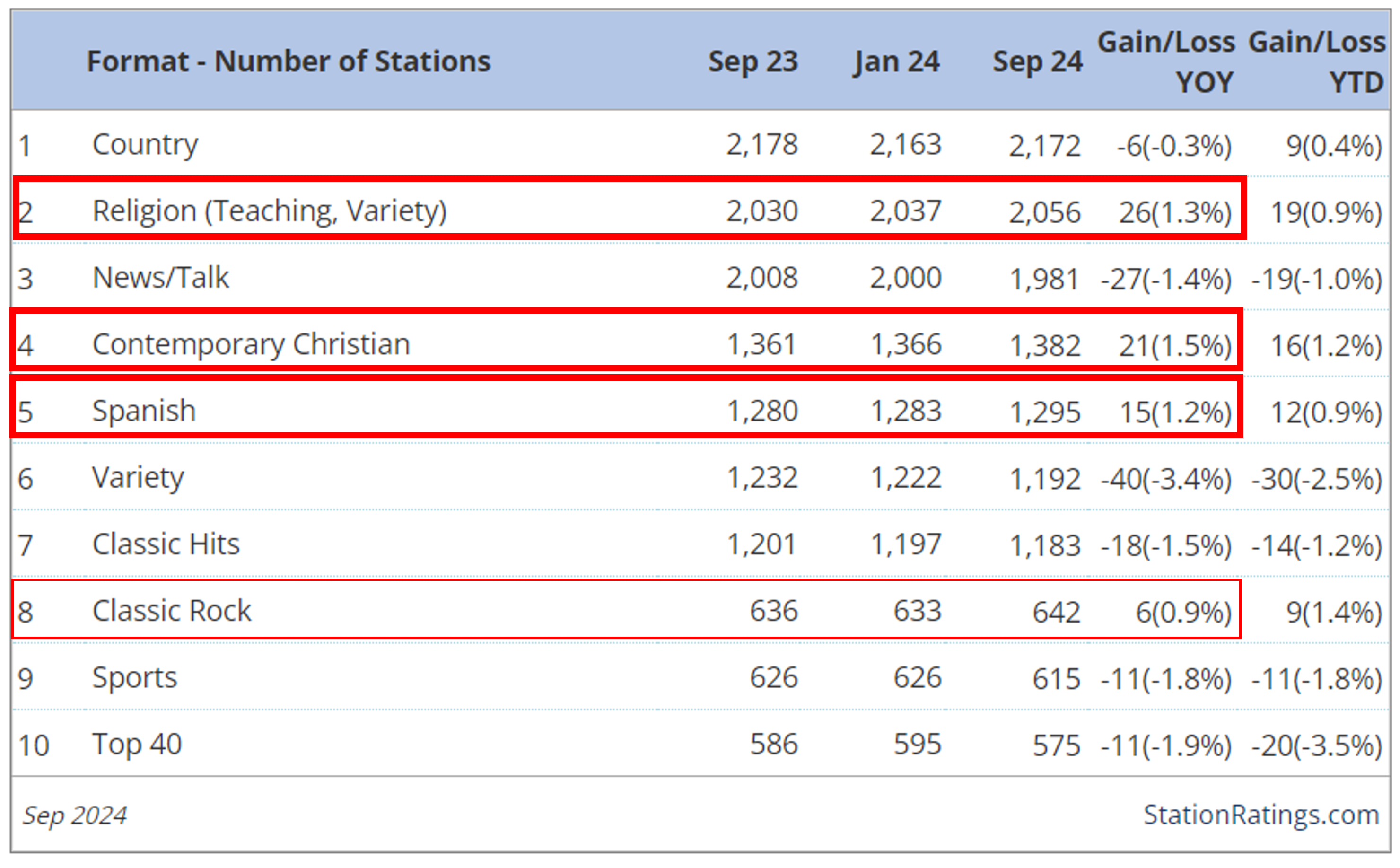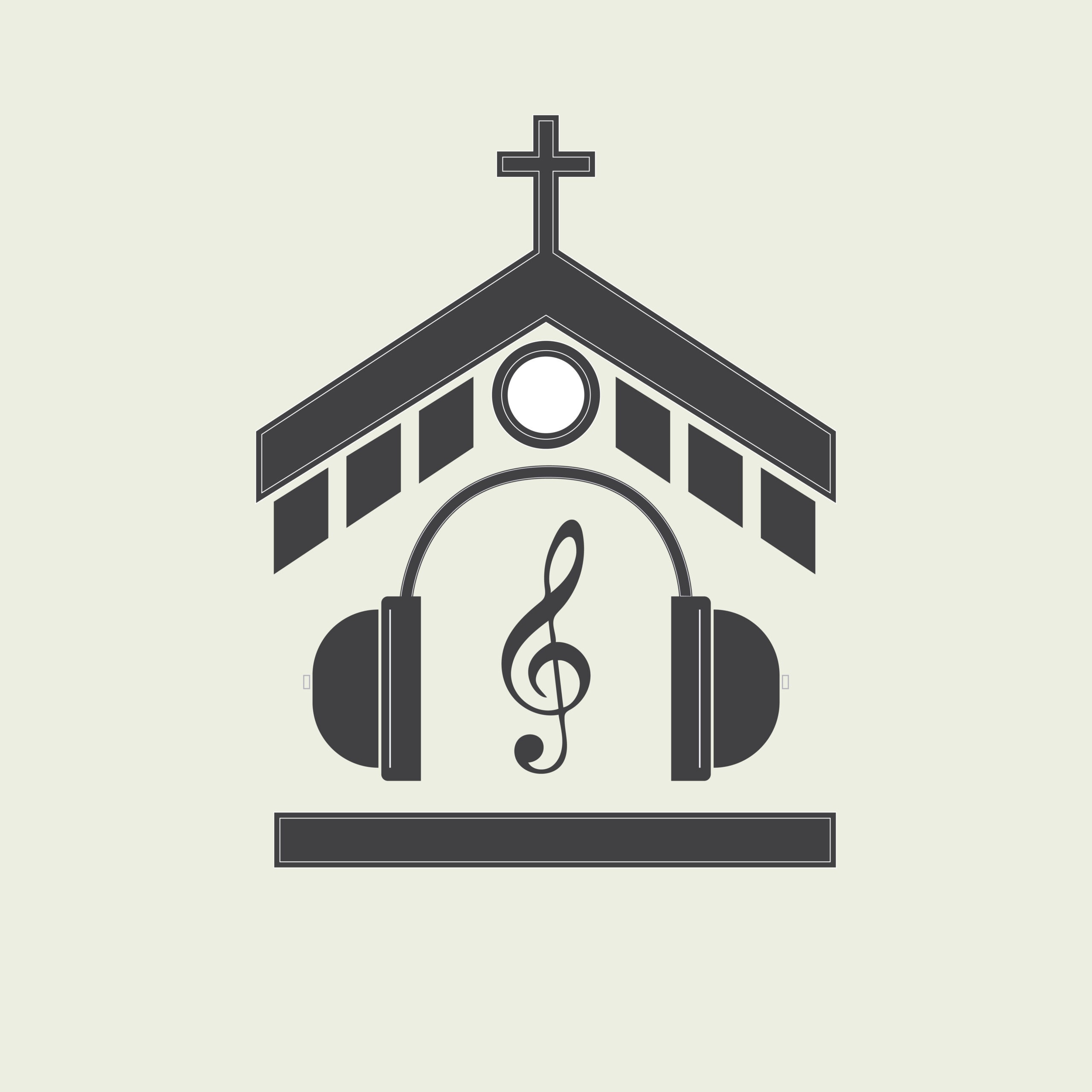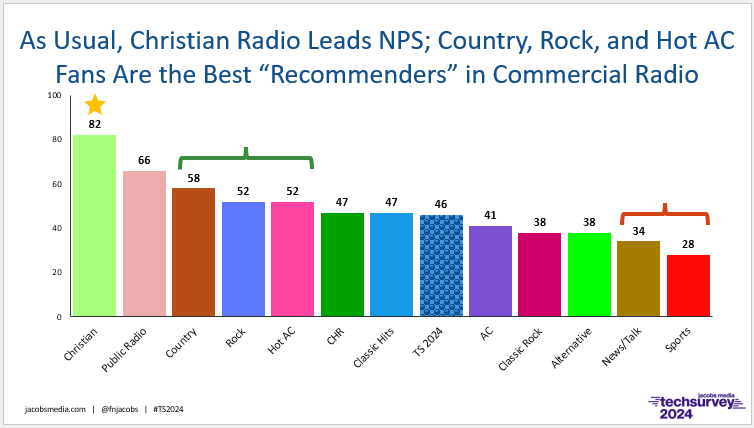 These days, it’s challenging to get an accurate idea of just how radio is doing in what has arguably been an especially challenging year. By all accounts, 2024 was supposed to be a rebound year, thanks to political ad spend. After all, this is the most important election we’ve witnessed in some time – and that’s saying something after the tumultuous presidential contests of 2016 and 2020.
These days, it’s challenging to get an accurate idea of just how radio is doing in what has arguably been an especially challenging year. By all accounts, 2024 was supposed to be a rebound year, thanks to political ad spend. After all, this is the most important election we’ve witnessed in some time – and that’s saying something after the tumultuous presidential contests of 2016 and 2020.
After everything is toted up at the end of this year, chances are we’ll be looking at record spending levels for political advertising. After all, since Kamala Harris dramatically entered the race for the White House over the summer, her campaign has raised a cool one billion dollars. And it sure appears she’s not going to leave any money languishing in the bank, nor is her opponent, Donald Trump.
If you live in a so-called “swing state” like my Michigan, you know what I’m talking about. Local television is loaded with political ads, often making up every unit in commercial clusters. But in local radio, of course, it’s spotty. You hear ads for the various candidates – we have a very hot Senate race here, too. But across the radio dial, political advertising is inconsistent at best in many markets.
local radio, of course, it’s spotty. You hear ads for the various candidates – we have a very hot Senate race here, too. But across the radio dial, political advertising is inconsistent at best in many markets.
In Radio Ink this morning, the numbers indicate that between July and early October, Harris has outspent Trump on the radio airwaves by more than 2:1. In real dollars, the Vice President’s expenditures are just north of $465 million versus the former President’s investment of just over $204 million.
And as the story points out, most of this spending has been funneled into those seven red hot key states: Arizona, Georgia, North Caroline, Nevada, Pennsylvania, Wisconsin, and Michigan.
But what other metrics of KPIs – key performance indicators – help tell the story of radio in 2024? We certainly don’t have a census – or anything close to it – to determine just how many radio jobs have been lost this year – or over the past decade. But if you work for a station, a radio company, or like me – you work with a lot of them – you have some sense for how population has been lost.
Yet, this information is not tracked. And when companies go through their systematic RIFs, they certainly don’t realize specifics about who receive pink slips, not to mention just how many suffered this fate.
But we do have format counts, and they’re revealing. In fact, Inside Radio’s Precision Trak data for September continues a narrative that should come as no surprise to astute broadcasters.
The changing numbers of stations occupying a specific music or spoken word lane speaks volumes about the overall health of formats. Radio broadcasters are savvy businesspeople, judging formats carefully before abandoning one and adopting another.
When these charts are released, my methodology is to study growth or declines on a year-to-year basis – in this case, September ’23 to September ’24 – in much the same way it is best to analyze this month’s ratings against how your station was performing last year at the same time.
So, what jumps out at you when you look at this chart below?

The top 10 formats by sheer number of stations is revealing in and of itself. Note that the top format in the U.S. is Country with 2,172 stations in its community. And Top 40 cruises in #10, the last position on this chart with a mere 575 stations – and falling. Since last September, the format is down nearly 2% (and 3.5% for 2024). I don’t have data going back 10 or even 20 years ago, but I think it’s safe to assume Top 40 has fallen several ranks during the past several years. It indeed will be news if/when Top 40 falls off this chart altogether.
What’s also fascinating about this ranker is who is missing. We shouldn’t be surprised that formats such as Jazz, Classical, and Triple A don’t show up. Notably, they are the three most dominant Public Radio formats. Over the years, more and more non-commercial stations have adopted these genres.
But also nowhere to be seen are Urban formats (including HipHop), Adult Contemporary, Rock, Alternative, and Oldies.
The Urban family of formats are more market by market in presence. But just a few decades ago, AC, Rock (or Active/AOR), and Oldies might have been well-represented in these format tallies. Alternative has always been more of a specialty format, typically more present (and more successful) in West Coast markets. But for Adult Contemporary and Rock specifically, their respective falls from format grace are notable, and indicative of a changing radio industry.
But let’s talk growth, because it’s an oft-overlooked topic in radio conversations these days. And in fact, several formats are doing very well, looking back to the previous September specifically.
Spanish cruises in at the fifth position, up more than 1% year-over-year, adding 15 stations during this period. Its position makes a statement about population shifts across America. There is likely more growth to come.
But the 800-pound gorilla on this chart is Christian radio. And I should refer to the phenomenon as plural massive simians because Christian not only places two formats in the top five, and both are showing signs of incredible growth.
are showing signs of incredible growth.
What Inside Radio labels “Religion” is the spoken word version of Christian – mostly. These stations tend to focus on teaching, but some do play music. That it’s the second most popular radio format is a statement – up more than 1% YOY – or a massive 26 stations added since September ’23.
And then there’s Contemporary Christian, a format very familiar to us at Jacobs Media. We’ve done a version of Techsurvey for these stations for more than a decade now, tracking their meteoric rise – especially during the past decade.
In fact, it would not surprise me to learn the growth has probably been even more spectacular since 2020 – or the year a global pandemic attacked not just this country, but our world.
Our research indicates that the bounce back from the pandemic has been sporadic, better for some formats, worse for others. But Christian radio has proved to a formatic elixir for millions of radio listeners across the country.
As many have battled through tough personal times, fighting depression, anxiety, as well as financial and familiar pressures, these radio stations have been there for them.
Talk about filling the emotional and spiritual needs of a growing audience – Christian radio is redefining the concept of “connection.”
Next week, I’ll present our Christian Music Broadcasters’ version of Techsurvey to a record number of stakeholder stations. There will be lots of good news to share, but one of the best stories is the format’s Net Promoter Scores, heads above the performance of Public Radio as well as all the commercial radio formats we measure:

For obvious reasons, Christian radio earns a gold star for being considerably higher in fan recommendation than all other formats. Last year in our CMB 2023 study, the format also earned the #1 score of 82. In this case, being flat is a big win.
Note that in the second position is Public Radio with a 66 – impressive on the surface. But just a few years ago during the so-called “Trump Bump,” public radio scores broke the 70-barrier.
Interestingly, the business model of Christian radio, in general, has made the format even more conducive for growth. Many stations are non-commercial or run a very limited inventory of ads. Revenues are predicated on donations, and most programmers and managers in the Christian sector will tell you their stations tend to be performing well, even during a time when many fans have been concerned about the economy.
You’ve probably also noted that most of the acquisitions made during the past few years have been made by Christian companies and organizations. Many of these stations are owned or run by networks where flipping a format isn’t much more complex than flipping a switch.
All of this adds up to unquestioned success at a time when many radio operators are questioning everything.
In the Christian radio community, they’re having very different discussions. And that brings to mind whether secular broadcasters might not learn a thing or two from its Christian colleagues. For too many years, commercial radio operators treated Public Radio like an alien life form. In the process, many important lessons were missed.
Similarly, many commercial programmers and managers have no idea what’s going on at their Christian cousins up and down the dial.
In that case, they’re missing a good show.
A postscript: You may have noted on the Inside Radio chart, Classic Rock is also a growth format. But I chose a “thin red line” to highlight it. Of the formats on the rise, Classic Rock’s rise is more modest – up less than 1% YOY, adding six stations since last September.
Last week, a long-time client asked me, “Fred, how much longer do you think Classic Rock is going to be a viable format, especially given its aging demos?”
And to that I replied, “You know, people have been asking me that same question since 1986.”
That should tell us something about format survival and resilience. The numbers of stations on this chart – heading both north and south – don’t represent hard and fast trends, although music formats heading decidedly downward like Variety Hits and Top 40 are worth tracking.
Format counts aren’t the equivalent of actuarial tables that can predict the future or even pinpoint trends. But they are what I call “leading radio indicators.”
Keep watching them.
- A 2020 Lesson?It Could All Be Gone In A Flash - April 24, 2025
- How AI Can Give Radio Personalities More…PERSONALITY - April 23, 2025
- Can Radio Afford To Miss The Short Videos Boat? - April 22, 2025




Hi, Fred. FASCINATING chart, thank you for sharing. Forgive me if I missed it but what is the “Variety” format at #6.
Is that a catch-all for all the one offs like Vietnamese or sports betting?
Thank you.
Variety is a catch-all, but only refers to stations that feature “three or more distinct formats”–including, but not limited to, block-based programming.
Vietnamese would be part of Ethnic, while betting might not be considered any different from Sports overall.
(Thankfully, I use PT data for work.)
One factor to watch is any format change that results in a station being spun off from a cluster, allowing it freedom from being a “chess piece” of a larger organization. I think those stations have a higher than average probability of flipping to a religion themed format, or possibly experimental formats targeted (gasp!) outside of a 25-54 age target.
One thing seems certain, Anyone expecting challenges to established mainstream formats should set aside that notion.
The days of “format wars” are receding quickly in the rear view mirror.
Great point, K.M. This is another area where the norm has been rocked by change.
My aha moment came At a regional Country Radio Broadcaters seminar in Mobile Alabama in the 90s. A market manager said in a panel that because his company had nearly a 50% market share, competition was no longer a concern . He said that they believed if they lost a listener , it was as likely that they would go to another one of their stations as a competitor. He was explaining why they did not advertise as much, but the same philosophy would also affect format choice.
And that’s been one of the intended benefits of consolidation. Many owners figured they know long had to market their brands because they “owned” the market. They didn’t count on Spotify, podcasts, satellie radio, streaming radido, and other other infinite options consumers now can choose from. Even when you on it all, you have to market, promote, and compete or attention.
I’m more interested in how the formats are doing ratings-wise than the number of stations running a format. Ratings aggregates would be more instructive regarding how formats are doing.
The industry trades cover that, too, of course. And I agree, ratings matter. But format counts tell a story, too. Owners tend to gravitate toward formats that work. Thanks, Brian.